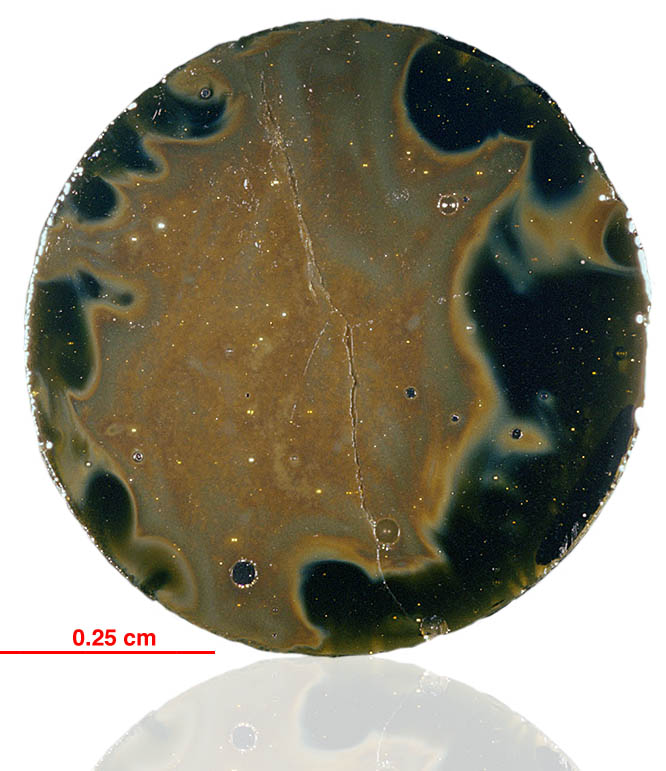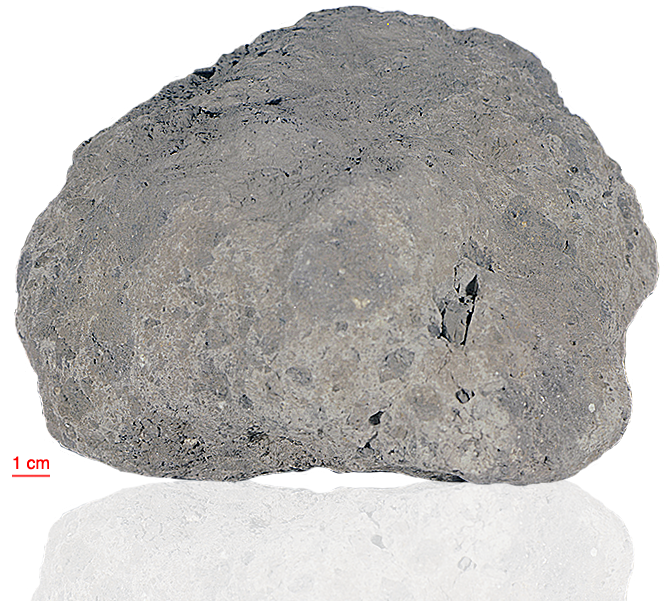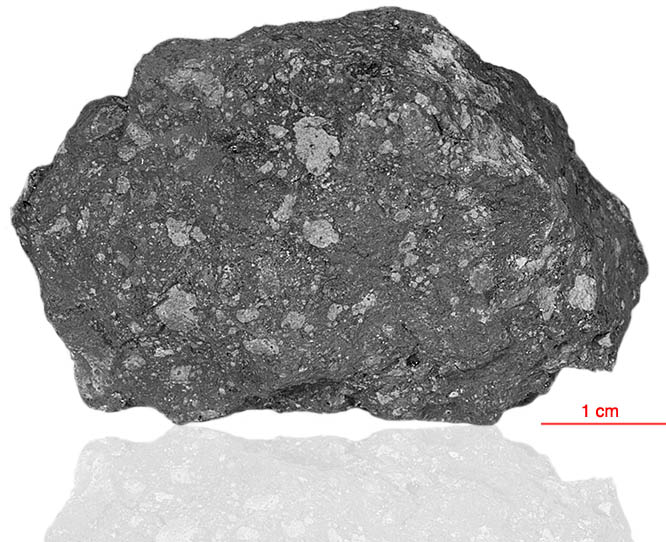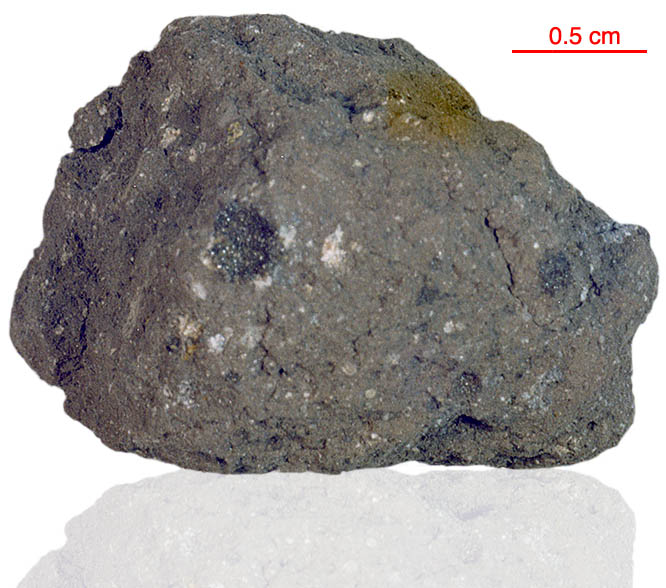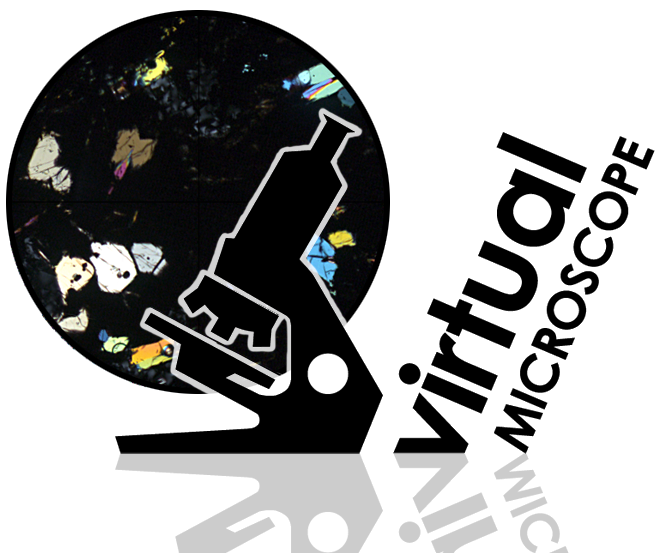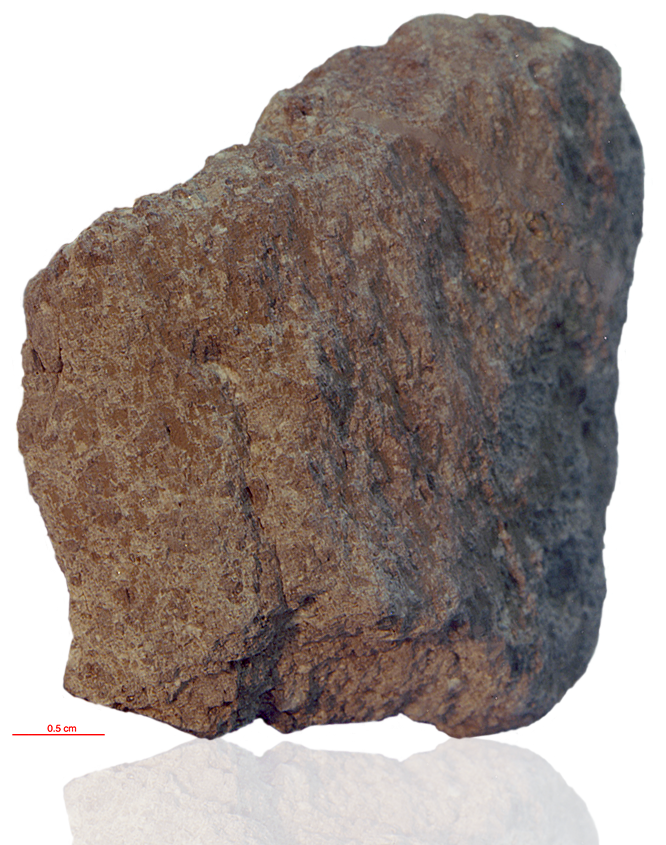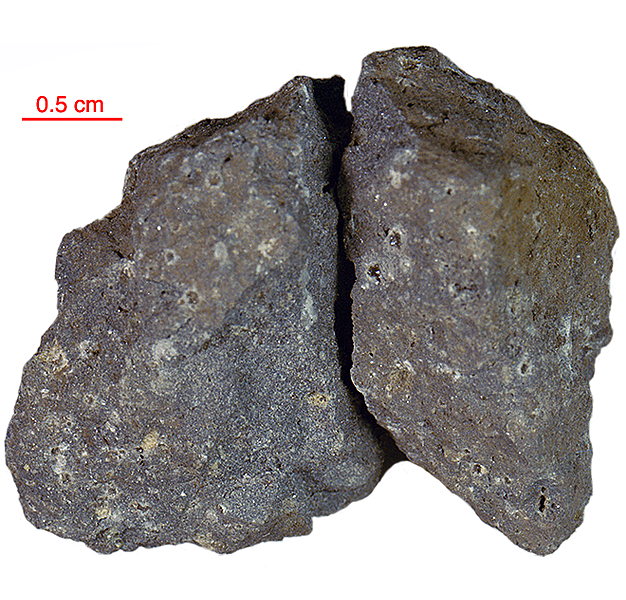
Fact sheet
14274 was collected as part of the Apollo 14 “comprehensive sample”. A circle about 14 meters in diameter was drawn and every rock on the surface placed in the same bag along with large soil samples 14259 and 14261. It is a coherent microbreccia with crystalline matrix and has has a seriate grain size distribution and most clasts are individual minerals.
The sample weighed 15.18 grams before analysis. It has not been dated.
Our thin section is slightly thick and displays plagioclase feldspar as pale yellow crystals (in XPL). An example of a large plagioclase feldspar is shown in rotation 2.
Further details of this and other Apollo samples are here: http://curator.jsc.nasa.gov/lunar/
The Apollo 14 landing site was in a region formed by impact-basin debris.
Most of the 42 kilograms of rocks and soil collected on Apollo 14 are breccias (rocks that are composed of fragments of other, older rocks). In some cases, the rock fragments that form a breccia are themselves breccias. Such rocks obviously have experienced complex histories with multiple generations of impact events. Some breccias were heated enough that some of the material in the rock was melted.
Apollo 14 was launched on 31 January 1971.

